 Released:2025-07-25 09:00:26
Released:2025-07-25 09:00:26 Views 1144 次
Views 1144 次 太阳能逆变器是光伏系统的核心设备,主要功能是将光伏组件产生的直流电转换为交流电,同时实现电压调节、功率优化、状态监控及并网适配等功能。其性能依赖于ADC、放大器、接口电路、监控模块及电源管理芯片的协同,按应用可分为离网型与并网型,按功率可分为微型、组串式和集中式,是保障光伏电力高效、稳定利用的关键环节。
太阳能逆变器是光伏系统的核心设备,主要功能是将光伏组件产生的直流电转换为交流电,同时实现电压调节、功率优化、状态监控及并网适配等功能。其性能依赖于ADC、放大器、接口电路、监控模块及电源管理芯片的协同,按应用可分为离网型与并网型,按功率可分为微型、组串式和集中式,是保障光伏电力高效、稳定利用的关键环节。

As the core component of photovoltaic systems, solar inverters convert DC power generated by photovoltaic modules into AC power while performing voltage regulation, power optimization, status monitoring, and grid compatibility. Their performance depends on coordinated operation of ADCs, amplifiers, interface circuits, monitoring modules, and power management chips. Classified by application as off-grid or grid-connected, and by power configuration as micro-inverters, string inverters, or centralized inverters, these devices are crucial for ensuring efficient and stable utilization of photovoltaic energy.
While solar inverters have achieved widespread adoption, they still face multiple technical bottlenecks. Efficiency and reliability challenges persist: Prolonged outdoor exposure to temperature fluctuations and dust erosion accelerates the aging of critical components like analog circuits and chips, compromising system stability. Cost constraints remain significant: High-end components such as ADCs and high-precision analog chips demand substantial R&D investments, driving up overall costs. Intelligent control limitations exist: Although microcontrollers (MCUs) are employed for management, their limited data processing capabilities result in inadequate communication and collaborative control performance when interacting with smart grids.

In the solar inverter industry, exceptional performance and stability are paramount. Leveraging its profound technical expertise and innovative capabilities, Corebai has successfully developed a series of high-quality products including CBM76AD06G, CBM27, and CBM2576. These solutions provide critical support for solar inverters through comprehensive functions such as signal acquisition, signal amplification, and power management, offering robust support for building efficient and stable solar power generation systems.
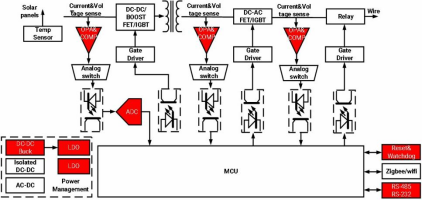
Solar inverter application block diagram
CBM76AD06G has high precision analog-to-digital conversion capability, which can accurately collect the voltage and current signals of photovoltaic panels, provide accurate and reliable data support for power regulation of inverter, help optimize working status in real time, and improve energy conversion efficiency.
l Multiple channels and high precision: It has the ability of 8-channel analog signal input and can process multiple signal sources at the same time. 16-bit analog-to-digital conversion can accurately convert analog signals into digital signals to ensure the accuracy and reliability of data.
l Excellent sampling performance: Supports synchronous sampling to ensure the consistency and accuracy of data in each channel. The throughput rate of all channels is up to 200kSPS, ensuring rapid capture of signal changes and perfect compliance with real-time requirements.
l Outstanding Input Characteristics: Compatible with both ±10V and ±5V bipolar input signals, offering a wide input range. The analog input impedance reaches up to 1MΩ, effectively reducing the load impact on front-end signal sources. Additionally, it integrates an analog input clamping protection circuit that can withstand voltages up to ±16.5V, protecting internal circuits.
l Flexible interface: high speed serial and parallel interface, convenient to connect with various microcontrollers, processors, easy to system design and integration.
CBM27 and CBM8542: In solar inverters, they are mainly used to amplify weak sampling signals such as voltage and current of photovoltaic panels with high precision. At the same time, they have low noise characteristics to reduce interference, can operate stably in a wide temperature environment without affecting performance, and can provide sufficient drive for subsequent circuits to ensure the accuracy of signal processing and system stability.
2.1 CBM27 is a precision operational amplifier chip with the following characteristic parameters:
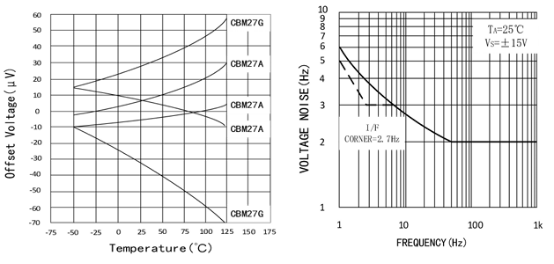
l Low noise: the input voltage noise is only 3.5nV/√Hz, which reduces signal interference and improves the detection accuracy of small signals.
l High gain bandwidth product: 8MHz gain bandwidth product and 2.8V/μs voltage swing rate, which can meet most high-speed signal processing.
l Wide temperature range: -40℃ to +125℃ working temperature, adapt to outdoor harsh environment.
l The low input offset voltage is only 26μV, and the temperature drift of 0.2μV/°C can guarantee long-term stability.
l Wide voltage supply: (±4V to ±18V or single power supply 8V~36V), suitable for a variety of power environment.
2.2 CBM8542 is a general-purpose operational amplifier chip with the following characteristic parameters:
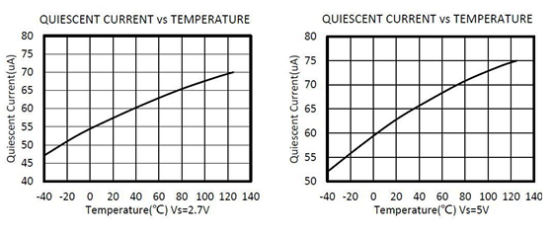
l Low power consumption: the power consumption of a single channel is only 45μA, reducing the power consumption of the system.
l Track-to-track output: The output swing is close to the power rail to maximize the dynamic range.
l Low input bias current: The input bias current is 4pA, which can reduce the error caused by the bias current and ensure the accuracy of signal processing.
CBM2903: real-time monitoring of voltage (input, output and current conversion voltage), and comparison with the threshold to achieve overvoltage/undervoltage, overcurrent protection;
l Wide power supply voltage range: the working voltage is 2~30V, can adapt to a variety of power supply environment, can be applied to most high-voltage products without changing the peripheral power supply.
l Low power consumption: The typical power consumption of each channel is as low as μA class, which greatly reduces the static power consumption of the product and is conducive to energy saving.
l Fast response speed: the response time is 1.3μs, which can quickly compare and judge the input signal, and trigger the protection mechanism in time to ensure the safe operation of the inverter.
CBM2576, CBM1117 and other power management chips can adapt to wide voltage input, provide stable power supply for each module inside the inverter, ensure the reliable operation of MCU and other components, and reduce the risk of failure.
4.1 CBM2576 is a DC/DC type voltage regulator chip, with the following characteristic parameters and advantages:
l High current output: can drive 3A load, can meet the power requirements of small servers, industrial control equipment and other equipment with high power requirements.
l Rich voltage selection: there are fixed output voltage versions such as 3.3V,5.0V,12V,15V, and adjustable versions with output voltage ranging from 1.23V to 37V, which can adapt to a variety of voltage requirements of the circuit.
l Easy design: The power supply design can be completed with the minimum number of external devices, which reduces circuit complexity, cost and board space.
l Strong environmental adaptability: The test node temperature range is-40℃ to +125℃, which can work stably in harsh environment.
4.2 CBM1117 is a low voltage difference linear regulator LDO with the following characteristic parameters:
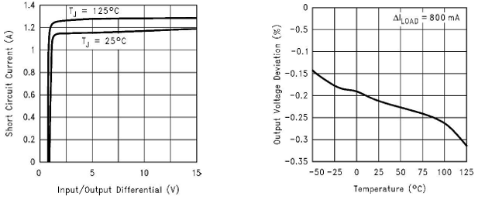
l Low voltage difference: This means that the device can work stably when the input voltage is close to the output voltage, especially suitable for battery-powered devices (such as mobile phones and laptops), which can make full use of the remaining power of the battery and prolong the battery life.
l High precision output: high output voltage accuracy, can be stable for MCU, sensor power supply.
l Overcurrent protection: built-in protection circuit to enhance system reliability.
CBM809, CBM706: real-time monitoring of power supply voltage, when the voltage is lower than the threshold, quickly send reset signal to avoid abnormal MCU program, ensure circuit stability and data security.
5.1 CBM809 is a monitoring circuit chip with the following characteristic parameters and advantages:
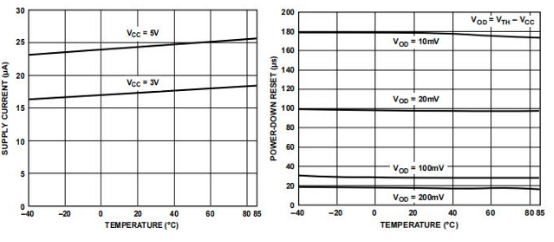
l Low power consumption: The operating current is only 17μA, which is suitable for low-power portable devices and can extend battery life.
l Precise voltage monitoring: supports 2.5V,3V,3.3V,5V and other voltage monitoring to ensure timely reset when the power supply voltage is abnormal.
l Reliable reset: The reset position is as low as 1VVCC, and the power-on reset pulse is at least 140ms to ensure reliable system reset in unstable power supply, and the push-pull output improves the driving capacity.
l Strong environmental adaptability: working temperature range-40°C to +125°C, can operate stably in harsh environment.
l Small package: 3-pin SOT-23 and SC70 packages are adopted, which occupies less PCB space and is conducive to miniaturized design.
5.2 CBM706 is a monitoring circuit chip with the following characteristic parameters and advantages:

l Multiple reset thresholds: Provide a variety of reset threshold options, such as 2.63V for CBM706R,2.93V for CBM706S and 3.08V for CBM706T, to fully meet various voltage monitoring requirements.
l Using a low power design, the static current is as low as 90μA, greatly reducing the energy consumption of battery-powered devices and thus effectively extending their battery life.
l Reliable reset function: it can output reset signal under power on, power off, power failure and other conditions. When VCC is low to 1V, the reset output can still work, and the reset pulse width is 200ms, which can ensure the microprocessor to complete the reset successfully.
l Lookout watchdog monitoring: It has an independent watchdog monitoring circuit. If the watchdog input is not triggered within 1.6 seconds, relevant functions will be activated to prevent the system from falling into a dead cycle or abnormal state.
l Manual reset is convenient: It has a low-level effective and noise-free manual reset input (MR), which allows users to manually reset the system according to their needs.
CBM3085, CBM3232: support solar inverter and remote monitoring system and other long-distance, multi-node communication, strong anti-interference ability, to ensure the stable transmission of power generation data.
6.1 CBM3085 is an interface chip with the following characteristic parameters:
l Low power consumption: The low power consumption design scheme can effectively reduce energy consumption, which is suitable for scenarios with strict requirements on power consumption, such as battery-powered equipment, and can extend the service life of equipment.
l Moderate transmission rate: the data rate can reach 500kbps, which can meet most of the requirements of conventional data transmission and can be applied to general industrial control, data acquisition and other scenarios.
l Strong ESD protection capability: It has strong electrostatic discharge protection capability, which can withstand up to 2000V of electrostatic discharge at the TTL/CMOS level, and can reach 15000V of protection level at the RS-485 level, ensuring stable operation in harsh electromagnetic environment or static electricity frequency conditions.
l Good environmental adaptability: the working temperature range is-40℃ to +125℃, can adapt to cold outdoor or high temperature industrial environment and other different temperature conditions, stable performance.
l Interface protocol is universal: RS-422/RS-485 interface protocol is supported, with good universality.
6.2 CBM3232 is an interface chip with the following characteristic parameters and advantages:
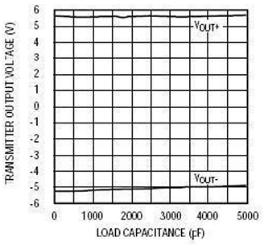
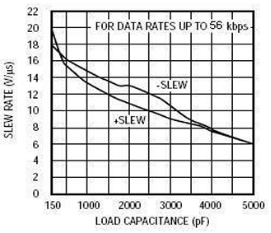
l Transmission rate: up to 120Kbps, to meet the communication needs of various scenarios.
l Strong ESD anti-interference: with high level of electrostatic protection, contact discharge ±8kV, air discharge ±15kV, reduce the risk of damage.
l Wide power range: can operate stably under 3.3V to 5.5V voltage, adapt to a variety of power environment.
l Simple circuit design: Few external components (only 50.1μF capacitors are needed for 3.3V power supply), reducing the complexity and cost of design.
l Wide temperature range: Some models work in a temperature range of-40℃ to 85℃, which is especially suitable for harsh applications such as industrial control and on-board systems.
Corebai is deeply engaged in research and development, and enables solar inverters with high precision chip technology. It is widely used in the following scenarios:
Scenario: outdoor camping, scientific expedition, etc., with small photovoltaic panels and portable energy storage power supply (such as mobile power supply).
Function of inverter: Micro inverter (power number watt to hundreds of watts), light in size, high efficiency, support USB, AC interface output, power supply for mobile phones, laptops and other devices.
Agricultural photovoltaic: Photovoltaic panels are combined with agricultural planting and breeding (such as photovoltaic greenhouses). The inverter needs to adapt to high humidity and dust environment, and has anti-corrosion and anti-mold design.
Surface photovoltaic: For photovoltaic power stations installed on lakes, reservoirs and other water surfaces, the inverter must have high waterproof grade (IP67 and above) and salt spray resistance.
Traffic photovoltaic: expressway service areas, charging pile photovoltaic roof, photovoltaic street lights, etc., the inverter needs to be small and vibration resistant (such as vehicle-mounted photovoltaic), supporting stable output of low power (several watts to thousands of watts).
Industrial and Commercial Roofs: Large-scale rooftops in corporate factories, warehouses, and similar facilities, with installed capacities ranging from thousands to tens of megawatts, enable local power consumption to reduce electricity costs. Most inverters are cluster-type systems that support MPPT (Maximum Power Point Tracking) for precise regulation, adapt to complex lighting conditions including roof obstructions, and feature grid-connection protection (isolated island effect prevention, overvoltage and overcurrent protection).
Household PV: Small rooftop PV system for residents (usually 3-10kW), with small inverter size and easy installation. It supports single-phase 220V grid connection, and some of them have energy storage interface (suitable for home energy storage batteries). The power generation can be remotely monitored through the APP.
Scenario features: Suitable for remote areas without grid coverage, including villages, field base stations, border posts and RV camps, etc., which need to be used together with energy storage batteries.
Inverter Function: Utilizing an off-grid inverter that integrates DC-AC conversion and energy storage management, it effectively controls battery charging/discharging to ensure stable output voltage for load fluctuations. Some models also feature UPS functionality, guaranteeing continuous power supply during outages (e.g., for communication base stations or emergency facilities).
010-62106066
( Monday to Friday 9:00 - 18:00 )
 704-705, Block D, Building 2, No. 9 Fenghao East Road, Haidian District, Beijing
704-705, Block D, Building 2, No. 9 Fenghao East Road, Haidian District, Beijing

Wechat Public Account